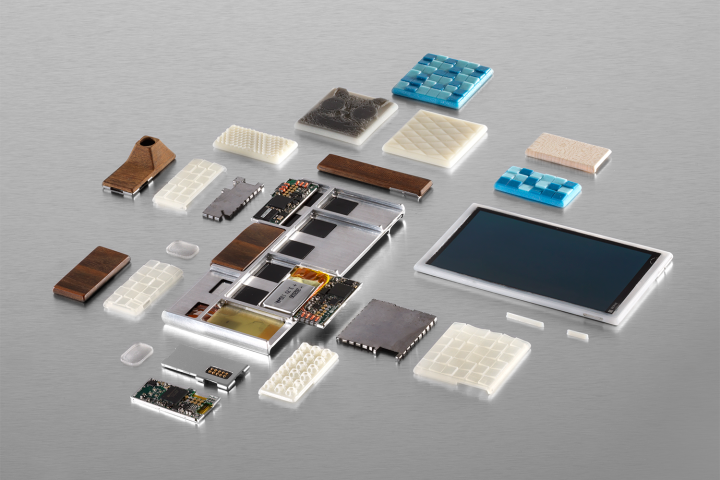
The team working on the Project Ara modular smartphone has released a new video. The three-minute film is produced by Phonebloks, the company whose project eventually was absorbed into Ara, and is a fascinating glimpse at how the phone is progressing.
Project Ara, in case you haven’t been following it, is a smartphone which can be specced up by the owner, using removable blocks containing key parts of the device. For example, you could choose to have a massive battery and no camera. Google is also considering multiple chassis, so you could take the brain out of a big screen device, and put it in one which is more portable, with no additional setup needed.
In the video, we’re shown the small modules being plugged into a development Ara chassis, when it’s explained that electro-permanent magnets will be used to keep them in place. These are super secure electromagnets which can be turned on and off, making it easy to swap components, while keeping them in place once they’re docked.
We also get to see the work 3D Systems is doing on Project Ara. Originally brought onto Ara by Motorola late last year, 3D Systems is concentrating on the casings and chassis of the phone. The components shown in the video have bright patterns, small images, and textures too. The impression is, the outside of Project Ara will be equally as customizable as the inside.
The head of design at Google’s advanced technology and products group also revealed the phone will keep its skeletal, Lego-style look, with which we’ve already become familiar. He says the modular, blocky style has been embraced by the team, and it won’t be hidden away under a cover.
Finally, we get a glimpse of the Project Ara configurator app, which lets owners browse the catalog of parts available for the phone, then play around with where they will fit on the phone. We’re also reminded that Project Ara isn’t going to be a high-end, incredibly expensive device. “Some of the people won’t have used a smartphone before,” says team leader Eric Gunther about the challenges the team faces, “so we’re trying to make the interface as simple and spatially intuitive as we can.”
Previously, Google has said Project Ara will be ready for sale in the first few months of 2015.



